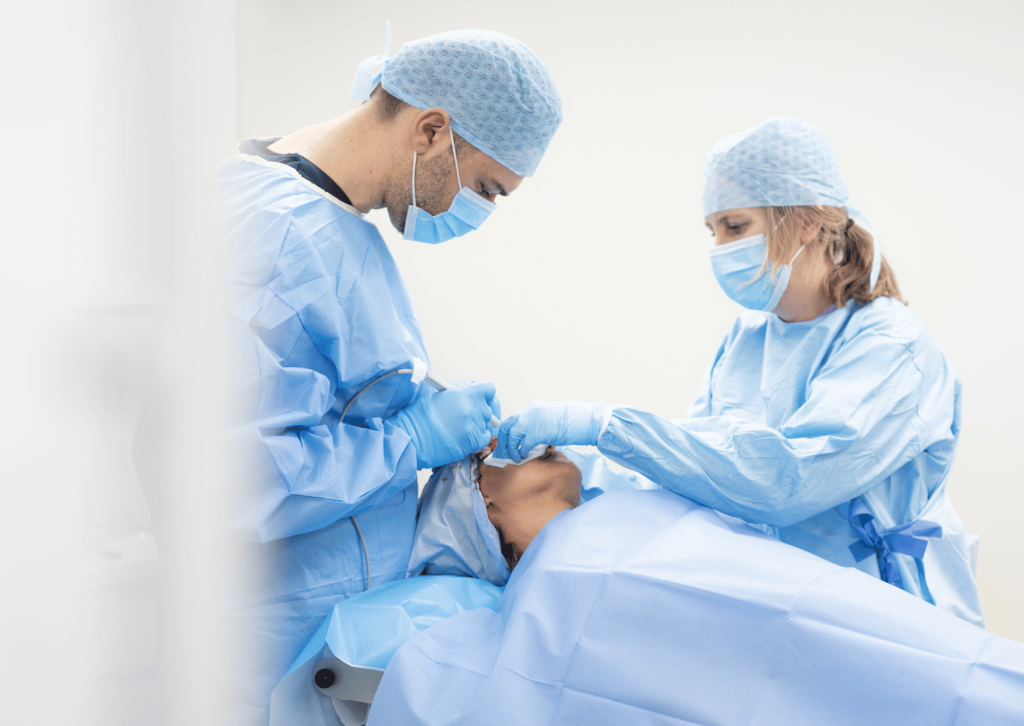
Blepharoplasty, or eyelid surgery, is a highly sought-after procedure for those looking to rejuvenate their appearance by addressing issues such as drooping eyelids, puffiness, and under-eye bags. While the benefits of this surgery are well-known, one of the most common concerns among prospective patients is the recovery process—specifically, how long it will take to look “normal” after the procedure.
Dr Ayad Harb, a leading aesthetic and reconstructive surgeon and the founder of SRGN Clinic, has extensive experience in performing blepharoplasty and guiding patients through their recovery journey. In this blog post, we explore the typical recovery timeline and what patients can expect as they heal and return to their normal appearance.
Immediately following blepharoplasty, patients will notice swelling and bruising around the eyes. These effects are entirely normal and are expected after a surgical procedure in such a delicate area. The degree of swelling and bruising can vary from person to person, depending on factors such as skin type, the extent of the surgery, and individual healing responses.
During the first 48 to 72 hours, the swelling is usually at its peak. Dr Harb advises his patients to rest with their heads elevated during this time to help minimise swelling. Cold compresses applied to the eye area can also be beneficial in reducing swelling and discomfort. It is important to note that the initial swelling and bruising, while pronounced, do not represent the final outcome of the surgery.
By the end of the first week, most patients will see a significant reduction in swelling and bruising. However, it is still normal for the eye area to look slightly puffy or discoloured. Many patients describe this phase as the time when they start to look more like themselves, albeit not entirely “normal” just yet.
Stitches are typically removed within 5 to 7 days post-surgery, which can further improve the appearance of the eyelids. Once the stitches are out, the healing process accelerates, and the eyelids begin to settle into their new shape. Patients are usually able to resume light activities during this period, though they should continue to avoid strenuous exercise and heavy lifting.
During the second and third weeks after surgery, the majority of the swelling and bruising will have subsided. Patients often feel comfortable returning to their regular routines, including social activities and work. By this time, any residual bruising can usually be easily concealed with makeup.
At this stage, the eyes begin to appear much more natural, and the results of the surgery become increasingly apparent. The eyelids will have settled significantly, and the incisions, though still healing, are usually discreet and well-hidden within the natural creases of the eyelids.
Although patients may look quite normal after two to three weeks, the healing process continues for several months. The final results of blepharoplasty are typically realised between three to six months post-surgery. During this time, any remaining swelling will dissipate, and the incisions will continue to fade, becoming almost imperceptible.
Dr Harb emphasises the importance of patience during this phase. While most people are satisfied with their appearance within the first few weeks, it’s important to understand that subtle changes will continue as the healing process completes. Patients are encouraged to follow all post-operative care instructions provided by Dr Harb and attend follow-up appointments to ensure optimal healing and results.
Several factors can influence how quickly a patient recovers and looks “normal” after blepharoplasty:
The journey to looking “normal” after blepharoplasty is a gradual process that varies for each individual. While significant improvements are usually seen within two to three weeks, it’s important to remember that full recovery and final results may take several months. Dr Ayad Harb and the team at SRGN Clinic are dedicated to supporting patients through every step of their recovery, ensuring they achieve the best possible outcomes.
For those considering blepharoplasty, scheduling a consultation with Dr Harb can provide valuable insights into the expected recovery timeline, personalised to their specific needs and circumstances.
Swelling and bruising during recovery can temporarily alter your appearance, but this improves as healing progresses.
It usually takes 4 to 6 weeks for most swelling to subside, but full results may take several months.
If done subtly, it’s often not noticeable, though others may comment on your refreshed appearance.
Skin tightening occurs gradually, with most improvement visible within 4 to 6 weeks.